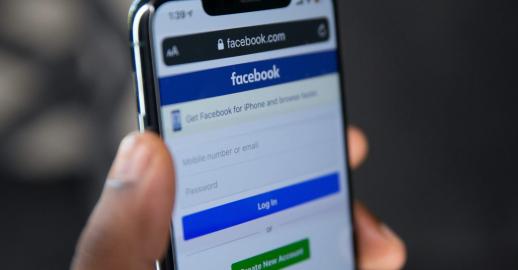An Introduction to Image Recognition Technology for eCommerce
2nd November 2020
Visual search is a relatively new aspect of digital marketing, and broadly speaking, hasn’t been something marketers have primarily optimised their websites for. But ‘Lens’ searching technology, through platforms such as Pinterest, Google and Amazon, enables you to use your smartphone's camera to search for what you see in an entirely new way. Therefore, this type of tech shouldn’t be overlooked within your marketing strategy.
As a retailer, visual search could help you to expand your consumer reach and improve the online shopping experience. So, if you’re not already optimising your product images for visual search you should think about doing so, because your competitors might be– and if they’re not, you’ll benefit by being one step ahead of them.
What Is Image Recognition Technology?
Image recognition technology allows you to shop with your camera, or ‘visually search’ for a product. Visual search is where a searcher provides an image, instead of typing a search query, and the search engine displays similar image results. It is a relatively new concept but should be considered an increasingly powerful tool for brands and e-commerce platforms.
What is Pinterest Lens?
Pinterest is used by many consumers to visually pin desirable images and create boards. Regardless of the lens feature, this is a fantastic medium for product promotion as consumers can search for areas of interest, such as ‘house plants’ and get inspired by the images they see. If they click on a great-looking image, they can be led directly to your website and make a purchase with ease.
Where does Pinterest Lens come into this? Well, Lens is effectively a ‘point-and-shoot’ discovery tool that analyses and interprets smartphone images to find related Pins and ideas, then suggest them to the user, eliminating the element of typing into the search bar.
From a retailers’ perspective, the idea of being able to showcase your products to potential consumers without them having to type anything is an appealing concept, because it makes it easier for consumers to find your products.
Pinterest’s audience may not be as vast as Google, however, when it comes to buyer intent and visual search usage, it’s interesting to point out that there are over 600 million visual searches carried out every month and that proportionately, Pinterest drives more referral traffic to e-commerce sites than other social platforms.
These are pretty impressive statistics, so as a retailer, are you using Pinterest and benefiting from the Lens feature? If you aren’t, then maybe you should be.
What is Google Lens?
The concept of Google Lens is the same as Pinterest Lens, it being a discovery tool that analyses and interprets smartphone images to find related shopping results to show the user. But the extent to which you can ‘discover’ in the search results is extraordinary.
Some examples include being able to scan a restaurant menu and being shown recommendations on best-rated dishes or scanning written content in a different language and being shown the translated text over the image in a matter of seconds. These features are inspiring and can be genuinely useful in everyday life.
But, as you will know, Google isn’t a social platform like Pinterest, so the shopping feature of Pinterest Lens may be the most useful from a retailer’s perspective.
An example of how the fundamentals of image recognition technology work through Google Lens:
Image

Image

I went to the Google app on my smartphone, tapped on the lens image to the right of my search bar (to the left of voice search), hovered over my desk lamp and pressed the search button. I was instantly shown multiple retail websites that sold a lamp just like mine. It’s as simple as that - with one click you are directed to the retailers’ product page for that specific product.
This method of searching can be applied when you are out shopping and want to compare prices of a product you’ve seen in a store that you like, or if you saw someone wearing a jacket you loved. It could even be used to scan a plant, a car or bike and you would be provided with clear, actionable results.
What Can Visual Search Do For E-commerce Brands?
Visual Search is not often at the forefront of most online retailers’ minds, but choosing to optimise for it can only be a good thing.
Just some of the reasons for this are:
1. Promoting A Small Brand In A Big Market Place
It is hard for new, small brands to get discovered, meaning visual search can provide a new avenue for potential customers to discover your products.
On top of this, image recognition technology provides a chance for increased conversions by combining text-based and visual search.
2. Leveraging New Tech
Why not use it? Brands can optimize content for a platform where their audience is already there, such as on Google, Pinterest or Amazon.
Furthermore, as a brand, you can partner with image recognition tech providers and integrate visual search into your own platform. Namely, Asos has integrated visual search into their platform to provide an easy to use, enhanced customer experience and Levi’s partnered with Pinterest to create the ‘Find your Levi’s style’ tool, to provide customers with curated jeans recommendations.
3. Capitalise On Impulse Buying
If people feel inspired to shop and are just browsing on a social platform, you could target people who aren’t even looking to make a purchase or who see a great deal on something they have visually searched and love.
4. Increased Revenue and Visibility
It has been speculated that e-commerce brands who optimise for voice and visual search will increase their profits by tapping into a style of shopping that people love: visual appeal and ease of use, just like Instagram shopping. It’s no secret that visual search technology is rapidly improving and becoming mainstream, so e-commerce brands who deliver it gain a significant edge.
What Should Your Initial Focus Be As A Retailer?
Optimising your product website imagery.
Image recognition technology is not yet perfect; lenses can auto-select the wrong focal point, categorize a person instead of a product or display out of stock items, which would be frustrating for a consumer.
Therefore, ensuring that the images used on your product pages are clear and appealing to the eye is essential to enable any lens to recognise them. Uncluttered images with a clear focal point can help visual search engines identify specific products and lead people to your website instead of a competitor’s. Utilising visual search will also provide you with better insights into customer motivations and habits to provide a more tailored experience.
The Future Of Visual Search
The potential for visually-driven strategies to improve the overall shopper experience will only grow as we continue to see new integrations and updates.
It is important to consider how much further image recognition technology can go by trying to figure out how visual search can enhance an experience or solve a problem in a range of industries and for millions of different products. That’s why it is important to consider taking advantage of these types of technology as well as your more traditional marketing actions.
While visual search is in the early stages of development, retailers that position themselves now to capitalise on the growth of visual search in the future could see incredible results.
Just as image recognition technology provides you with clear, actionable results suited to your shopping needs, SilverDisc can offer great results when it comes to your digital marketing needs.
Let’s discuss how we can work with you to achieve your goals – contact us today.






